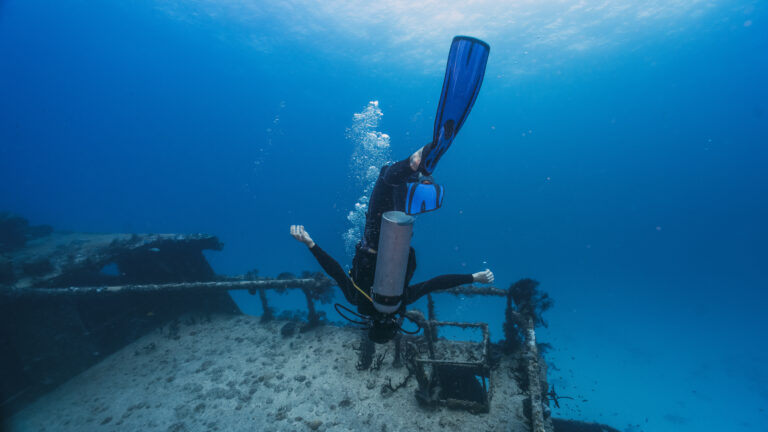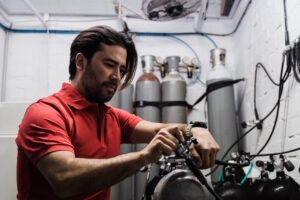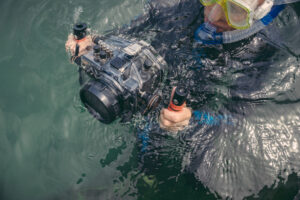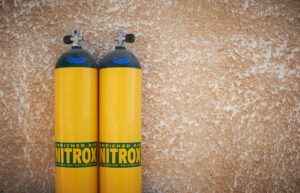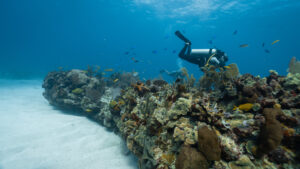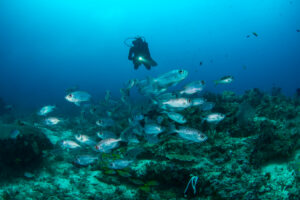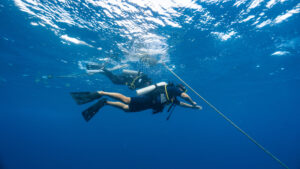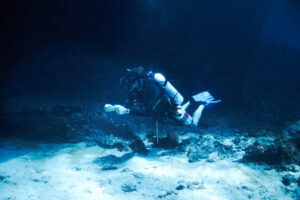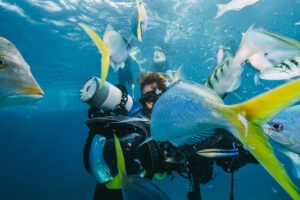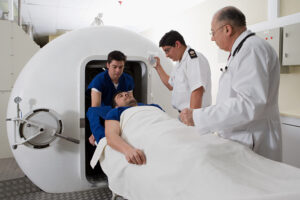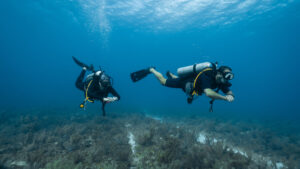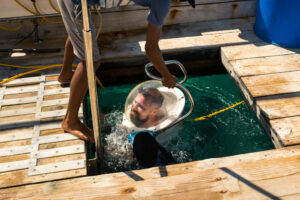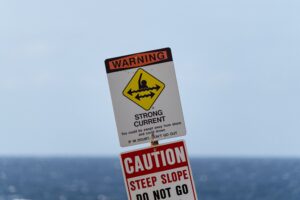What is Narcosis?
Narcosis, often referred to as “the rapture of the deep,” is a condition that affects scuba divers when they descend to certain depths underwater. It is a state of altered consciousness caused by the pressure of breathing gases at depth. Understanding narcosis is crucial for divers to ensure their safety and well-being while underwater. This condition can impact a diver’s mental and physical capabilities, leading to potentially dangerous situations if not recognized and managed properly. As such, it is a topic of significant importance in the field of scuba diving, both for recreational and professional divers.
Understanding Narcosis
Narcosis, in the context of scuba diving, primarily refers to nitrogen narcosis, but it can also encompass other types such as carbon dioxide narcosis. Nitrogen narcosis occurs when nitrogen, a major component of the air we breathe, exerts a narcotic effect under high pressure. This typically becomes noticeable at depths greater than 30 meters (98.4 feet). As divers descend, the partial pressure of nitrogen increases, leading to its greater absorption into body tissues and affecting the nervous system.
Carbon dioxide narcosis, although less common, can also occur in divers, particularly when there is insufficient ventilation or when exertion levels are high. Elevated levels of carbon dioxide can lead to confusion, dizziness, and impaired judgment. Understanding these different forms of narcosis is essential for comprehending the full scope of how high-pressure environments impact divers.
The effects of narcosis are often compared to alcohol intoxication, with symptoms ranging from mild euphoria and reduced coordination to severe disorientation and hallucinations. The severity of symptoms can vary widely between individuals and even from dive to dive for the same person. Recognizing these effects early and responding appropriately is critical for maintaining safety underwater.
Causes of Narcosis
Narcosis is caused by the increased partial pressure of gases, primarily nitrogen, when divers descend to significant depths. At sea level, the pressure is 1 atmosphere, but for every 10 meters (32.8 feet) of seawater, the pressure increases by another atmosphere. As the pressure increases, the amount of nitrogen dissolved in the blood and tissues also rises, leading to its narcotic effects.
Several factors influence the likelihood and severity of narcosis. Depth is the most significant factor, with deeper dives resulting in higher partial pressures of nitrogen and a greater risk of narcosis. The type of breathing gas used also plays a crucial role. Standard air, composed of approximately 78% nitrogen, is more likely to cause narcosis than breathing mixtures with lower nitrogen content, such as trimix, which includes helium.
Individual susceptibility to narcosis varies and can be influenced by factors such as fatigue, stress, alcohol consumption, and even the diver’s physical condition on the day of the dive. Environmental conditions like cold water, strong currents, and poor visibility can exacerbate the effects of narcosis, making it more challenging for divers to recognize and respond to symptoms.
Symptoms and Signs of Narcosis
The symptoms of narcosis can range from subtle to severe and often resemble those of alcohol intoxication. Early symptoms might include a sense of euphoria, relaxation, and overconfidence, which can impair judgment and decision-making. As narcosis progresses, divers may experience dizziness, lightheadedness, and difficulty concentrating. Physical coordination can also be affected, making tasks that require fine motor skills, such as operating dive equipment, more challenging.
In more severe cases, narcosis can lead to pronounced disorientation, confusion, and hallucinations. Divers may lose track of their depth and direction, increasing the risk of ascending or descending too quickly, which can lead to other diving-related injuries such as decompression sickness or barotrauma. Speech can become slurred, and thinking may slow down significantly.
Recognizing the signs of narcosis in oneself or in dive buddies is crucial. Changes in behavior, such as a sudden lack of communication, inappropriate laughter, or unusual movements, can indicate the onset of narcosis. It’s important for divers to be aware of these signs and to monitor each other closely, particularly at greater depths where the risk is higher.
Mechanisms Behind Narcosis
The development of narcosis is primarily due to the effects of high partial pressures of gases on the nervous system. Under increased pressure, gases like nitrogen become more soluble in body tissues, including the brain. This increased solubility affects the central nervous system, leading to the symptoms associated with narcosis.
One of the key mechanisms is the lipid solubility of nitrogen. Nitrogen dissolves in the fatty tissues of the brain, disrupting normal neural function. This disruption can impair the transmission of nerve impulses, leading to changes in behavior and cognitive function. The exact biochemical pathways are complex, but the overall effect is a general depression of the nervous system, similar to the effects of anesthetic agents.
Helium, used in trimix breathing mixtures, has a much lower narcotic potential than nitrogen due to its lower lipid solubility. This is why deep dives often utilize gas mixtures with helium to reduce the risk of narcosis. Understanding the physiological mechanisms behind narcosis helps divers and researchers develop better strategies for prevention and management.
Prevention Strategies
Preventing narcosis involves several strategies focused on minimizing the risk and recognizing early symptoms. One of the most effective prevention methods is to limit the depth of dives. Staying within recreational diving limits, typically less than 40 meters (131 feet), can significantly reduce the risk of narcosis. For dives beyond these depths, using gas mixtures with reduced nitrogen content, such as nitrox or trimix, is recommended.
Proper dive planning and gradual acclimatization to deeper depths can also help. Divers should avoid rapid descents and take time to adjust to the increasing pressure. Maintaining good physical fitness, avoiding alcohol before diving, and managing stress levels can enhance a diver’s ability to cope with the pressures of deep diving.
Monitoring and buddy checks are essential components of prevention. Divers should frequently check their depth, time, and air supply, and be vigilant for any signs of narcosis in themselves or their dive partners. Pre-dive briefings should include discussions on narcosis and plans for managing it if symptoms appear.
Management of Narcosis
If narcosis symptoms are recognized during a dive, immediate action is necessary to manage the condition and ensure safety. The primary response is to ascend to a shallower depth. Even a small ascent can significantly reduce the partial pressure of nitrogen and alleviate the symptoms. Divers should ascend slowly and calmly to avoid additional complications such as decompression sickness.
Maintaining communication with dive buddies is critical. Divers should inform their partners if they experience any symptoms of narcosis, and buddies should be trained to recognize and respond to these signs. Ascending together and providing reassurance can help manage the situation effectively.
Post-dive care is also important. Divers who experience severe narcosis should be monitored for any lingering effects after surfacing. It is advisable to seek medical advice, especially if symptoms persist. Understanding the factors that led to narcosis can help in planning future dives to avoid similar situations.
Impact on Dive Safety
Narcosis significantly impacts dive safety due to its potential to impair cognitive and physical abilities. The altered state of consciousness can lead to poor decision-making, increasing the risk of accidents and injuries underwater. Divers affected by narcosis might misinterpret their gauges, lose track of time, or fail to manage their air supply effectively, all of which can lead to life-threatening situations.
The relationship between narcosis and dive accidents is well-documented. Many diving incidents are attributed to the effects of narcosis, especially at greater depths. This underscores the importance of awareness and education among divers. Training programs emphasize the recognition and management of narcosis as a key component of dive safety.
Preventive measures, such as using appropriate gas mixtures, staying within safe depth limits, and conducting thorough pre-dive checks, are essential for mitigating the risks associated with narcosis. By understanding its impact and implementing best practices, divers can significantly enhance their safety and enjoyment underwater.
Key Takeaways
Narcosis is a critical condition that divers must understand to ensure their safety during underwater excursions. It results from the increased partial pressure of gases, particularly nitrogen, at depth and can severely impair mental and physical functions. Recognizing the symptoms, implementing prevention strategies, and knowing how to manage narcosis are vital for safe diving practices. Through proper training and vigilance, divers can mitigate the risks associated with narcosis and enjoy a safer diving experience.

